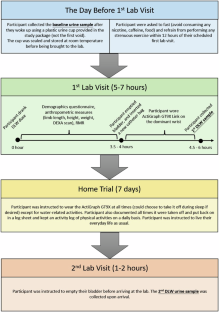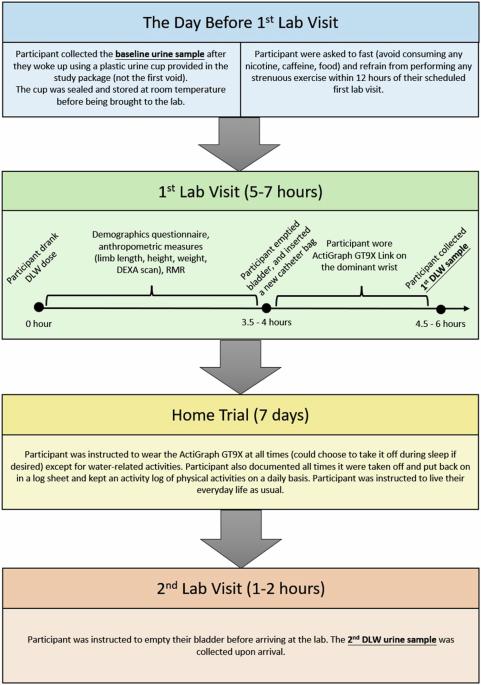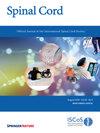基于 ActiGraph 的脊髓损伤轮椅使用者能量消耗估算的初步实地有效性。
IF 2.1
4区 医学
Q3 CLINICAL NEUROLOGY
引用次数: 0
摘要
研究设计横断面验证研究:开发一种基于原始加速度信号的随机森林(RF)模型,用于预测手动轮椅使用者(MWUs)的总能量消耗(TEE),并使用双标记水(DLW)方法评估这种新模型与之前文献中发表的四种现有模型的初步现场有效性:环境:美国匹兹堡的普通社区和研究机构:方法:利用之前两项研究中 78 名参与者的数据来开发新的射频模型。进行了一项为期七天的横断面研究,以收集参与者的自由生活体力活动和 TEE 数据、静息代谢率、人口统计学和人体测量学数据。十名脊髓损伤(SCI)的男性患者完成了研究,其中七名参与者的有效数据可用于评估五个模型的初步现场有效性:射频模型的平均绝对误差(MAE)为 0.59 ± 0.60 千卡/分钟,平均绝对百分比误差(MAPE)为 23.6% ± 24.3%。在初步实地验证中,五个评估模型的 MAE 为 136 千卡/天至 1141 千卡/天,MAPE 为 6.1% 至 50.2%。Nightingale 等人于 2015 年开发的模型性能最佳(MAE:136 ± 96 千卡/天,MAPE:6.1% ± 4.7%),而 RF 模型性能相当(MAE:167 ± 99 千卡/天,MAPE:7.4% ± 5.1%):现有的两个模型和我们新开发的射频模型在评估患有 SCI 的产妇的 TEE 方面显示出良好的初步现场有效性,并具有检测该人群生活方式改变的潜力。建议今后进行大规模的现场验证研究和模型迭代。本文章由计算机程序翻译,如有差异,请以英文原文为准。


Preliminary field validity of ActiGraph-based energy expenditure estimation in wheelchair users with spinal cord injury
Cross-sectional validation study. To develop a raw acceleration signal-based random forest (RF) model for predicting total energy expenditure (TEE) in manual wheelchair users (MWUs) and evaluate the preliminary field validity of this new model, along with four existing models published in prior literature, using the Doubly Labeled Water (DLW) method. General community and research institution in Pittsburgh, USA. A total of 78 participants’ data from two previous studies were used to develop the new RF model. A seven-day cross-sectional study was conducted to collect participants’ free-living physical activity and TEE data, resting metabolic rate, demographics, and anthropometrics. Ten MWUs with spinal cord injury (SCI) completed the study, with seven participants having valid data for evaluating the preliminary field validity of the five models. The RF model achieved a mean absolute error (MAE) of 0.59 ± 0.60 kcal/min and a mean absolute percentage error (MAPE) of 23.6% ± 24.3% on the validation set. For preliminary field validation, the five assessed models yielded MAE from 136 kcal/day to 1141 kcal/day and MAPE from 6.1% to 50.2%. The model developed by Nightingale et al. in 2015 achieved the best performance (MAE: 136 ± 96 kcal/day, MAPE: 6.1% ± 4.7%), while the RF model achieved comparable performance (MAE: 167 ± 99 kcal/day, MAPE: 7.4% ± 5.1%). Two existing models and our newly developed RF model showed good preliminary field validity for assessing TEE in MWUs with SCI and the potential to detect lifestyle change in this population. Future large-scale field validation studies and model iteration are recommended.
求助全文
通过发布文献求助,成功后即可免费获取论文全文。
去求助
来源期刊

Spinal cord
医学-临床神经学
CiteScore
4.50
自引率
9.10%
发文量
142
审稿时长
2 months
期刊介绍:
Spinal Cord is a specialised, international journal that has been publishing spinal cord related manuscripts since 1963. It appears monthly, online and in print, and accepts contributions on spinal cord anatomy, physiology, management of injury and disease, and the quality of life and life circumstances of people with a spinal cord injury. Spinal Cord is multi-disciplinary and publishes contributions across the entire spectrum of research ranging from basic science to applied clinical research. It focuses on high quality original research, systematic reviews and narrative reviews.
Spinal Cord''s sister journal Spinal Cord Series and Cases: Clinical Management in Spinal Cord Disorders publishes high quality case reports, small case series, pilot and retrospective studies perspectives, Pulse survey articles, Point-couterpoint articles, correspondences and book reviews. It specialises in material that addresses all aspects of life for persons with spinal cord injuries or disorders. For more information, please see the aims and scope of Spinal Cord Series and Cases.
 求助内容:
求助内容: 应助结果提醒方式:
应助结果提醒方式:


